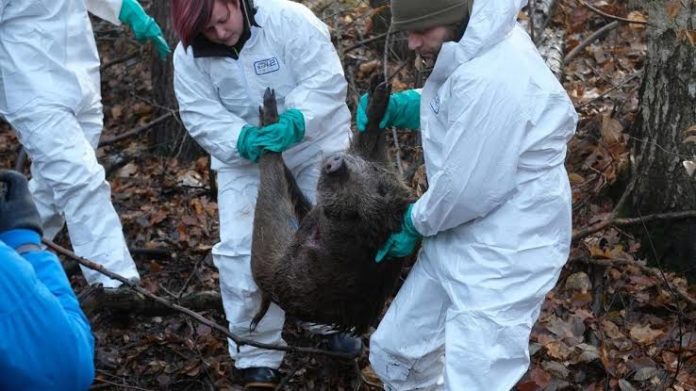BERLIN, Dec 11, 2019 (BSS/AFP) – Sniffer dogs, drones and electrified
fences: Germany is deploying a full array of defences to stop boars from
bringing swine fever into the country and avert a disaster for its thriving
pork industry.
“The question is no longer if swine fever will come to Germany but when,”
Torsten Reinwald, a spokesman for Germany’s hunting federation, told AFP.
The virus is not harmful to human health but can cause deadly bleeding in
domestic pigs and boars.
The only way of getting rid of it is through mass culling at farms — a
nightmare for German farmers.
Half of Germany’s pork production of five million tons a year goes to
foreign markets, making it Europe’s biggest exporter of the meat.
It is feared that even a single case could wreak havoc.
“The probability that countries like China impose a total import ban is
very high,” said Sarah Dhem, a representative of Germany’s meat products
association.
Dhem gave the example of a total Chinese import ban following a few
outbreaks in Belgium last year.
Losses could run into billions of euros and the European market would be
flooded with cut-price pork.
Farmers first began to worry when swine fever was identified at a pig farm
in western Poland in November.
– Drone patrols –
But it was the discovery of a boar with the fever near the town of Nowogrod
Bobrzanski — just 40 kilometres (25 miles) from the German border — that
really raised the alarm.
As a result, German regions are pulling out all the stops.
In Saarland, near the French border, packs of sniffer dogs are being sent
out to find dead boars so as to quickly remove any potential carriers of the
virus.
In Saxony, which neighbours Poland, vets and emergency workers are holding
drills in case of an outbreak and using drones and infrared cameras to find
sick boars.
Further north, in Mecklenburg-Western Pomerania, 50 kilometres of
electrified fence to stop boars along the border with Poland are being
prepared.
But, fearing that a spread to Germany may be inevitable, Denmark is already
putting up a fence along its own 70-kilometre border.
There have been several recent outbreaks of African swine fever in Central
and Eastern Europe since 2014, which have devastated the local pig farming
industries.
“Since it first appeared in Europe in 1957, the virus has almost always
been brought into other countries through airports and ports. It has been
exterminated everywhere except Sardinia” in Italy, said Sandra Blome, a swine
fever expert at the Friedrich-Loeffler Institute.
– Sick boar risk –
The irony is that Germany so far has profited from the ravages of swine
fever at farms in China, where more than a million pigs have had to be
culled.
That pushed up the price of pork imports, which are expected to more than
double in volume in 2019.
Until now, the possibility of humans spreading the virus inadvertently —
for example through discarded pork product sandwiches — was thought the most
likely.
Even though it has no effect on humans, the virus can survive for months in
smoked goods such as hams.
At train stations and in parks and forests up and down the country, posters
from Germany’s agriculture ministry urge people not leave any food behind.
Reinwald also pointed out that the virus can survive for up to three months
in mud carried in tyre threads.
But the attention now is firmly on roaming boars.
“The possibility of an infection from sick boars crossing the border is
very high, higher now than the risk from humans,” Blome said.



